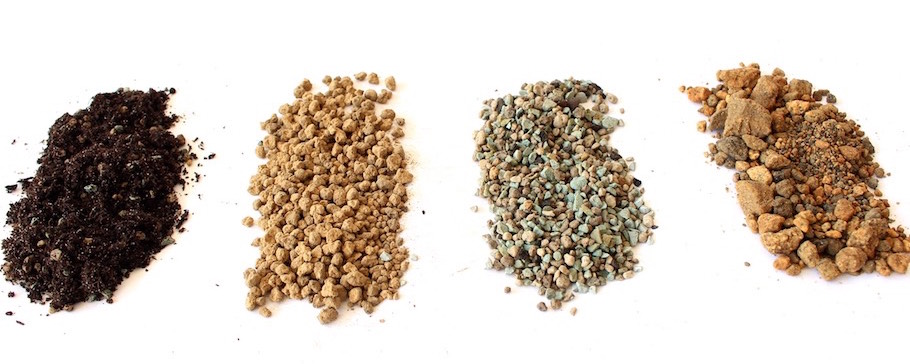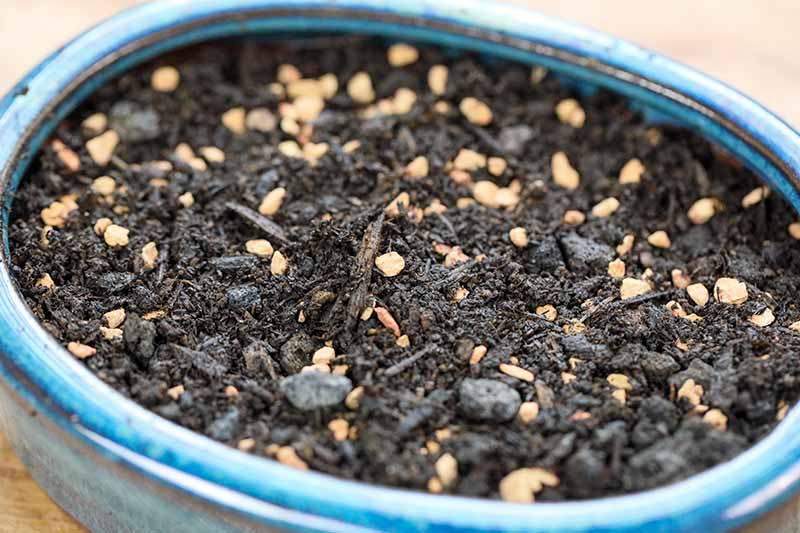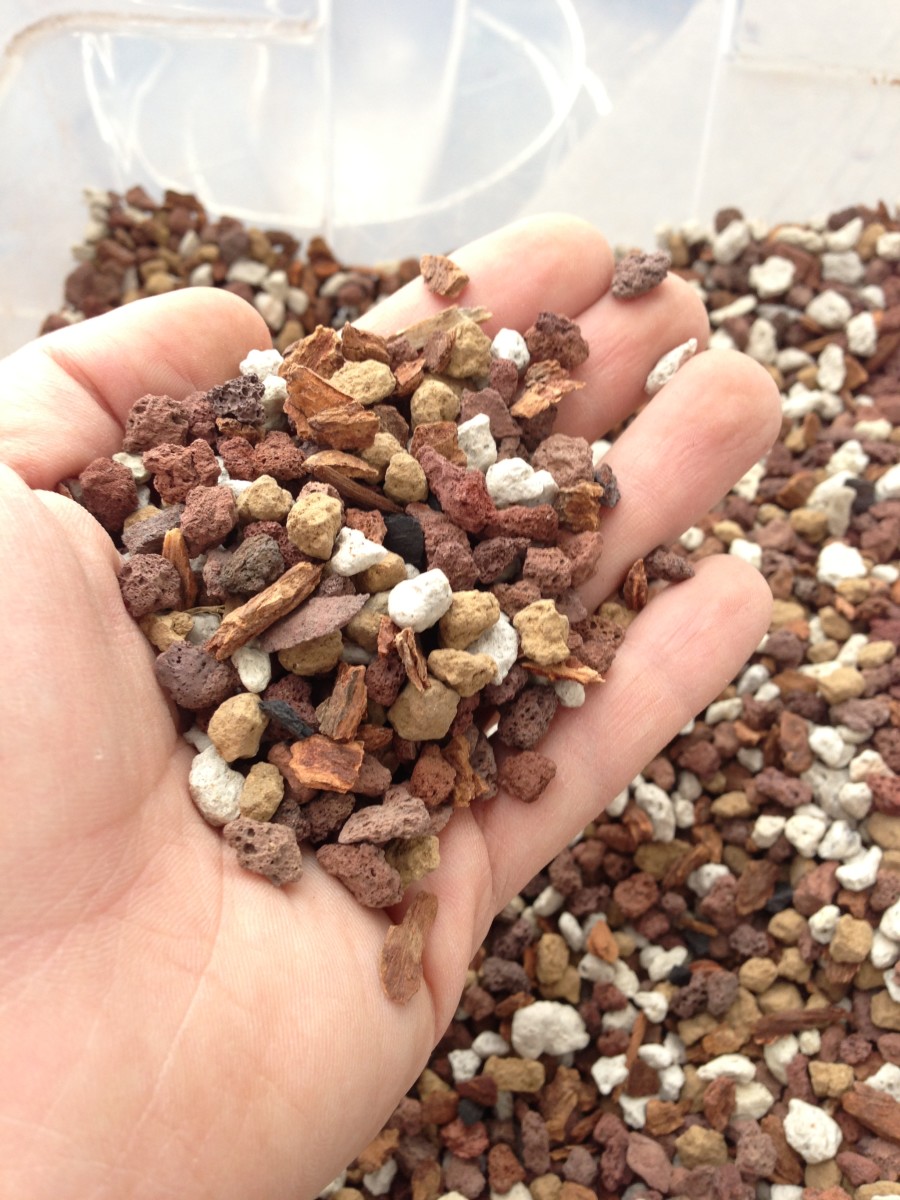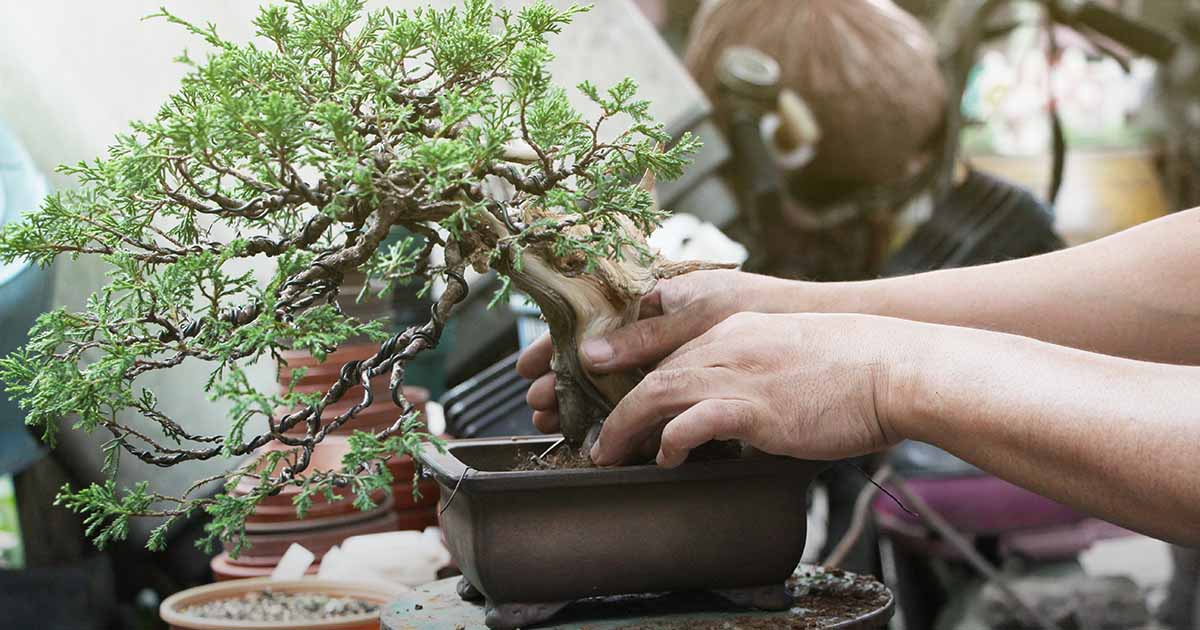In the following paragraphs, we'll examine the differing types of soil and substrates used in bonsai cultivation, such as natural and inorganic alternatives.
We are going to also find suggested soil mixtures for several bonsai species, such as deciduous, coniferous, and indoor varieties. From akadama and pumice to moss and river sand, we are going to dive to the interesting earth of bonsai soil and make it easier to realize why It can be a very important Section of cultivating these exquisite trees.

Bonsai soil
What is bonsai soil?
Bonsai soil is a specialized type of soil that is specifically formulated for growing and maintaining bonsai trees. Unlike regular garden soil, bonsai soil is well-draining and provides the necessary nutrients and moisture balance for the tree's root system. The composition of bonsai soil is carefully designed to meet the unique needs of bonsai trees, ensuring their health and longevity.
The importance of bonsai soil
The choice of soil plays a crucial role in the success of your bonsai tree. The right soil provides optimal drainage, allowing excess water to flow freely and preventing root rot. It also promotes a healthy and well-developed root system, which is essential for the overall health and growth of the tree. Bonsai soil retains moisture while allowing air to reach the roots, striking the perfect balance for the tree's needs. Choosing the right bonsai soil is essential for maintaining a healthy and thriving bonsai tree.
Bonsai substrates
What are bonsai substrates?
Bonsai substrates refer to the different materials that can be used to create the ideal soil composition for bonsai trees. These substrates are carefully chosen to meet the specific needs of different species of bonsai trees and to ensure proper water drainage and nutrient availability.
Different types of bonsai substrates
There are various types of bonsai substrates available, each with its own unique characteristics and benefits. Some common bonsai substrates include:
- Organic materials: These include ingredients such as bark, peat moss, and coconut coir. Organic substrates help retain moisture and provide essential nutrients to the bonsai tree.
- Inorganic materials: These involve factors like pumice, lava rock, and akadama. Inorganic substrates present exceptional drainage, making certain that excessive water would not accumulate within the roots with the bonsai tree.
- Soil amendments: They're substances which can be additional towards the soil combination to reinforce its Qualities. Samples of soil amendments include things like perlite, vermiculite, and sand. They improve the soil's aeration, water-holding ability, and nutrient availability.
By comprehending the different sorts of bonsai substrates and their Houses, it is possible to choose the most fitted just one in your bonsai tree's desires.
Natural or Inorganic Soils
Organic soils for bonsai
Organic soils for bonsai are made up of organic materials such as bark, peat moss, coconut coir, and compost. These resources supply a rich supply of nutrients to the bonsai tree and endorse balanced root growth. Organic and natural soils also have superior water retention Qualities, making sure the tree receives enough moisture among watering periods. On the other hand, it's important to note that natural soils may stop working after some time and grow to be compacted, leading to lousy drainage and opportunity root problems.
Inorganic soils for bonsai
Inorganic soils for bonsai encompass resources like pumice, lava rock, akadama, and soil amendments like perlite or vermiculite. These materials have outstanding drainage Qualities, blocking waterlogged soil and selling aeration around the roots. Inorganic soils are most well-liked by numerous bonsai lovers due to their longevity and ability to deliver a secure ecosystem with the bonsai tree's root technique. Nevertheless, They could need additional frequent watering and additional fertilization, as they don't hold just as much moisture or nutrients as natural and organic soils.
Advantages and disadvantages of employing organic and inorganic soils for bonsai
Choosing concerning natural and inorganic soils in your bonsai tree will depend on different components, such as the particular species of tree, your weather, and personal Tastes. Listed below are the advantages and disadvantages of each:
Organic and natural soils:
- Professionals: Supply nutrients, fantastic water retention, encourage healthy root progress.
- Drawbacks: Might break down eventually, likely for poor drainage if not adequately preserved.
Inorganic soils:
- Pros: Great drainage, long-lasting, steady natural environment for roots.
- Cons: Considerably less h2o retention, may have to have far more Recurrent watering and fertilization.
By taking into consideration the positives and negatives of both equally natural and inorganic soils, you can also make an informed choice according to the precise needs of one's bonsai tree.
Soil elements
Key parts of bonsai soil
Bonsai soil is often made up of a few main components: grit, natural and organic issue, and clay. These parts get the job done alongside one another to create The perfect soil structure for the bonsai tree's root program.
- Grit: Grit, which include sand or perlite, gives drainage and aeration while in the soil. It can help avert waterlogging and lets air to reach the roots.
- Organic make a difference: Natural make a difference, like compost or bark, offers nutrients towards the bonsai tree. Additionally, it assists retain dampness and Increase the soil's overall framework.
- Clay: Clay particles give some h2o retention traits and assistance bind the soil together. Even so, an excessive amount clay may result in very poor drainage and compaction.
Part of each soil component
Just about every soil ingredient plays a significant role in making a well-well balanced and balanced setting for that bonsai tree's roots.
- Grit: Grit supplies the mandatory drainage and aeration in the soil. It helps prevent the roots from sitting down in stagnant h2o, lessening the risk of root rot and advertising General root health and fitness.
- Organic make a difference: Natural and organic make a difference offers essential nutrients towards the bonsai tree. It aids in moisture retention and contributes to the general composition in the soil.
- Clay: Clay particles assist bind the soil with each other and provide some h2o retention capability. Nevertheless, it is vital to harmony the amount of clay in order to avoid problems like weak drainage and compaction.
By being familiar with the roles of each soil part, it is possible to produce a balanced bonsai soil combine that meets the precise demands of one's tree.

Recommended Bonsai soil mixtures
Common bonsai soil mixtures
There are several common bonsai soil mixtures that have been proven effective for various types of bonsai trees. These mixtures typically consist of a combination of inorganic substrates, organic matter, and soil amendments.
Some of the commonly used bonsai soil mixtures include:
- Akadama, pumice, and lava rock: This mixture is popular among bonsai enthusiasts for its excellent drainage and water retention properties.
- Akadama, lava rock, and organic and natural make a difference: This mixture brings together the main advantages of inorganic substrates Together with the nutrient-wealthy properties of natural issue.
- Pumice, perlite, and bark: This mixture provides good drainage and aeration when retaining some dampness and offering nutrients.
They're just a couple samples of bonsai soil mixtures, and The perfect combination will rely on the particular requirements of your bonsai tree plus your climate.
Aspects to contemplate when selecting a bonsai soil mixture
When choosing a bonsai soil combination, it's important to look at the following variables:
- Species of bonsai tree: Distinct species have distinctive moisture and nutrient requirements. Study the precise desires of the tree to pick a soil mixture that meets its requirements.
- Weather: The local climate you reside in can affect the humidity retention Attributes with the soil. Look at the common humidity and temperature close to you When selecting a soil combination.
- Watering habits: Your individual watering routines and plan must align While using the soil mixture you select. Some mixtures need extra frequent watering, while others retain humidity for more time periods.
- Price range: Some soil parts may be dearer than others. Take into account your spending plan when choosing a soil mixture.
By getting these things under consideration, you can pick a bonsai soil mixture that gives the ideal increasing disorders for the tree.
Deciduous Bonsai soil
Ideal soil composition for deciduous bonsai
Deciduous bonsai trees, for instance maple or birch, have certain soil demands to aid their growth and wellness. The top soil composition for deciduous bonsai ordinarily includes a mix of organic and natural make any difference, inorganic substrates, and soil amendments.
A suggested soil composition for deciduous bonsai may possibly contain:
- Akadama: Presents good water retention whilst enabling for drainage. Furthermore, it releases nutrients bit by bit eventually.
- Pumice: Encourages aeration and drainage during the soil, stopping waterlogging.
- Bark or peat moss: Adds organic matter to the soil, giving nutrients and humidity retention.
This soil composition makes sure that the roots of deciduous bonsai trees acquire the appropriate equilibrium of humidity, nutrients, and oxygen for ideal expansion.

Coniferous and Pine soil
Ideal soil mixture for coniferous and pine bonsai
Coniferous and pine bonsai trees have specific soil requirements due to their water retention needs and preference for acidic soil. An ideal soil mixture for coniferous and pine bonsai should provide good drainage while retaining moisture and maintaining the desired pH level.
A recommended soil mixture for coniferous and pine bonsai may include:
- Akadama: Provides excellent water retention while allowing for sufficient drainage. It releases nutrients slowly over time.
- Pumice: Promotes aeration and drainage from the soil, preventing waterlogged roots.
- Peat moss: Provides natural issue and acidity into the soil, making a really perfect pH level for coniferous and pine trees.
This soil mixture makes sure that the roots of coniferous and pine bonsai trees obtain the correct equilibrium of humidity, nutrients, and acidity for his or her specific needs.
Akadama
What is akadama?
Akadama is really a form of clay soil that is extensively Employed in bonsai cultivation. It is noted for its great drinking water retention Homes, which guarantee a steady supply of dampness to your bonsai tree's roots. Akadama can be prized for its capability to release nutrients slowly eventually, supplying a reliable source of nourishment with the tree.
Great things about employing akadama in bonsai soil
Making use of akadama in bonsai soil offers numerous Positive aspects:
- Water retention: Akadama has Excellent water retention Attributes, making it possible for it to carry humidity devoid of turning out to be waterlogged. This ensures that the bonsai tree's roots receive a constant provide of h2o, endorsing healthy expansion.
- Nutrient launch: Akadama slowly and gradually releases nutrients to the soil with time, providing a regular supply of nourishment for that bonsai tree. This reduces the need for frequent fertilization and allows keep a well balanced nutrient profile.
- Aeration: Despite its drinking water retention capabilities, akadama also offers adequate aeration to your bonsai tree's roots. It permits air to get to the root technique, preventing difficulties for example root rot as a result of lack of oxygen.
By incorporating akadama into your bonsai soil, you can make an optimum escalating setting for your tree, guaranteeing its health and fitness and vitality.

Lava rock
How lava rock benefits bonsai soil
Lava rock is a popular component in bonsai soil mixtures due to its excellent drainage and aeration properties. more info It is typically used in conjunction with other substrates to create the ideal soil composition for bonsai trees.
The benefits of lava rock in bonsai soil include:
- Drainage: Lava rock provides excellent drainage, preventing waterlogging and ensuring that excess water flows freely through the soil. This helps prevent root rot and provides a healthy environment for the roots to thrive.
- Aeration: The porous mother nature of lava rock permits air to circulate in the soil, furnishing oxygen to the bonsai tree's root system. Right aeration is essential for healthy root improvement and General tree progress.
- Longevity: Lava rock can be a strong substance that does not stop working effortlessly. This ensures that the soil construction continues to be steady with time, cutting down the need for Repeated soil replacements.
Lava rock is out there in numerous sizes and styles, permitting for customization determined by the precise demands within your bonsai tree and soil needs.
Differing types of lava rock
You will discover different types of lava rock which can be Utilized in bonsai soil mixtures, such as:
- Black lava rock: Black lava rock is a usually applied substance in bonsai soil mixtures. It provides fantastic drainage Houses and adds an aesthetic ingredient to the overall presentation of the bonsai tree.
- Crimson lava rock: Red lava rock is yet another common selection in bonsai soil mixtures. It provides related drainage and aeration Added benefits as black lava rock but has a distinct reddish coloration that provides Visible curiosity towards the container.
Both equally black and crimson lava rocks are widely out there and might be very easily included into your bonsai soil mixture.
Potting
Crucial strategies for prosperous bonsai potting
Potting is actually a crucial process in bonsai cultivation, since it straight impacts the health and growth from the tree's roots. Here are several important guidelines for thriving bonsai potting:
- Choose the suitable pot dimension: Pick out a bonsai pot that allows for root progress even though however offering a comfortable fit. Stay away from pots which have been as well substantial, as they can cause abnormal soil humidity and poor root progress.
- Use bonsai wire: Secure the tree while in the pot working with bonsai wire to make sure balance. This stops the tree from shifting or getting uprooted all through watering or potent winds.
- Trim and unfold the roots: In advance of potting the bonsai tree, carefully trim and spread out the roots. This encourages outward growth and helps prevent root tangling or root-bound concerns.
- Incorporate mesh screens: Position mesh screens around the drainage holes at The underside from the pot to forestall soil erosion and be certain correct drainage.
- Use refreshing bonsai soil: When potting, constantly use fresh new bonsai soil to provide the necessary nutrients and ideal increasing ailments for that roots.
By next these critical suggestions, you'll be able to make certain An effective potting method and encourage the general wellbeing and development of one's bonsai tree.
The position of bonsai pots in soil humidity Command
Bonsai pots Participate in a vital part in soil humidity control, instantly impacting the well being and expansion with the tree. Bonsai pots are usually shallow and have drainage holes, allowing for surplus h2o to escape and avoiding the soil from turning out to be waterlogged.
The design of bonsai pots encourages evaporation and air circulation, which assists control soil moisture ranges. The shallow depth and extensive opening with the pot expose much more surface area region on the soil for the air, aiding in humidity evaporation. This helps prevent the roots from sitting in excessively soaked soil, minimizing the risk of root rot and various drinking water-related difficulties.
Furthermore, the drainage holes in bonsai pots allow any surplus drinking water to escape, protecting against waterlogged soil and advertising aeration within the roots. Appropriate aeration is important for the well being and advancement of the foundation program, making sure the bonsai tree gets the necessary oxygen for development.
By utilizing bonsai pots suitable for successful humidity Manage, you'll be able to develop a positive surroundings for your personal bonsai tree's roots and market its Over-all well being and vitality.
In summary, deciding on the proper bonsai soil is significant for the accomplishment and health and fitness of the bonsai tree. Comprehending the differing types of bonsai substrates, the function of natural and organic and inorganic soils, The crucial element elements of bonsai soil, and the various advised soil mixtures will let you offer the best escalating situations in your bonsai tree. Whether website or not you do have a deciduous or coniferous bonsai, incorporating products like akadama and lava rock can improve the soil's drainage and nutrient availability. Additionally, paying attention to potting approaches and using bonsai pots made for dampness Command will further help the flourishing expansion of your bonsai tree. With proper knowledge and implementation of bonsai soil methods, you'll be able to enjoy the elegance and artistry of bonsai cultivation For several years to return.
